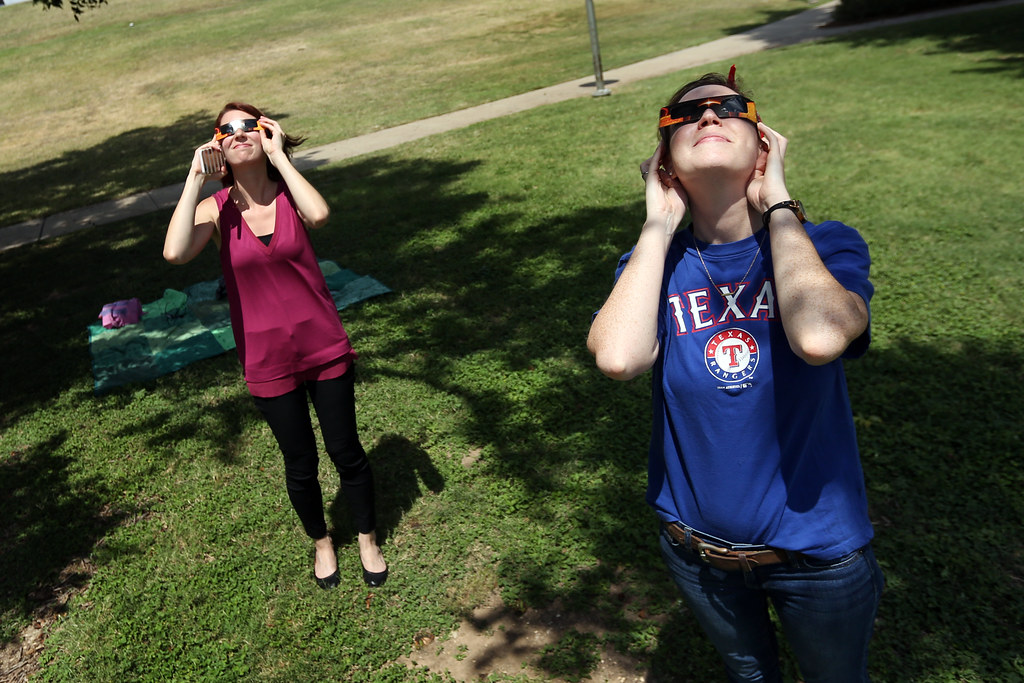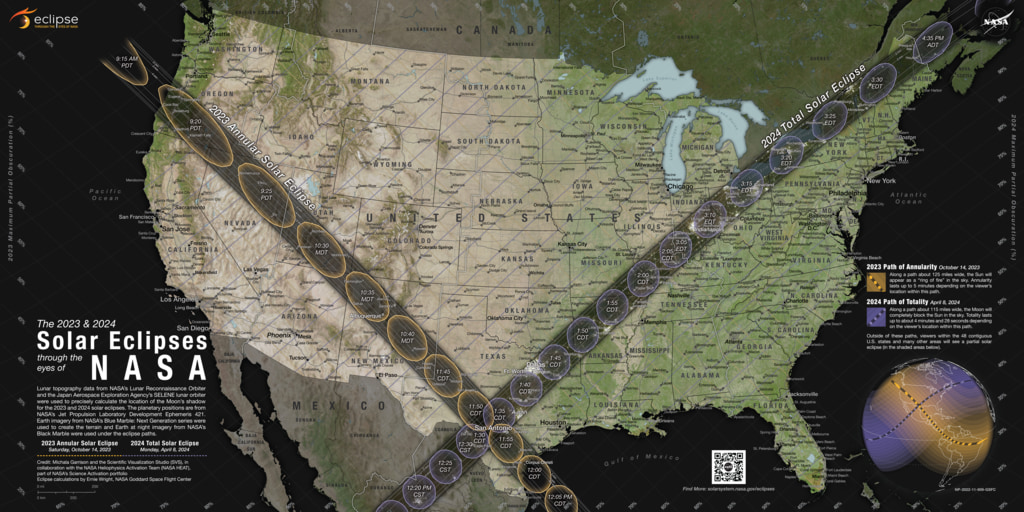This Saturday, many Texans will have the opportunity to see a rare annular eclipse. The moon will move directly between the Earth and the sun, creating a shadow over the Lone Star State.
But don’t look up unless you’re prepared: Protective eclipse glasses are needed to view this event safely.
Judith Meyer, the education and outreach senior program coordinator at the McDonald Observatory in West Texas, joined the Texas Standard to discuss what to expect this weekend.
This transcript has been edited lightly for clarity:
Texas Standard: What is the annular eclipse exactly, and how does it differ from the upcoming total solar eclipse?
Judith Meyer: A couple of ways. The annular eclipse happens when the moon, on its orbit around the Earth, is at a farther point from the Earth than average. And so it doesn’t completely cover up the disk of the sun.
And so folks who are in the line of annularity – and there’s a path of annularity; you’ve probably seen a map – will be able to see the moon in the middle of the disk of the sun and this ring of fire, and it’ll be the sun around the disk of the moon. So it’s exciting to see. I’ve never seen one, and I’m excited to get to see one myself.















